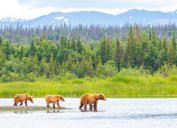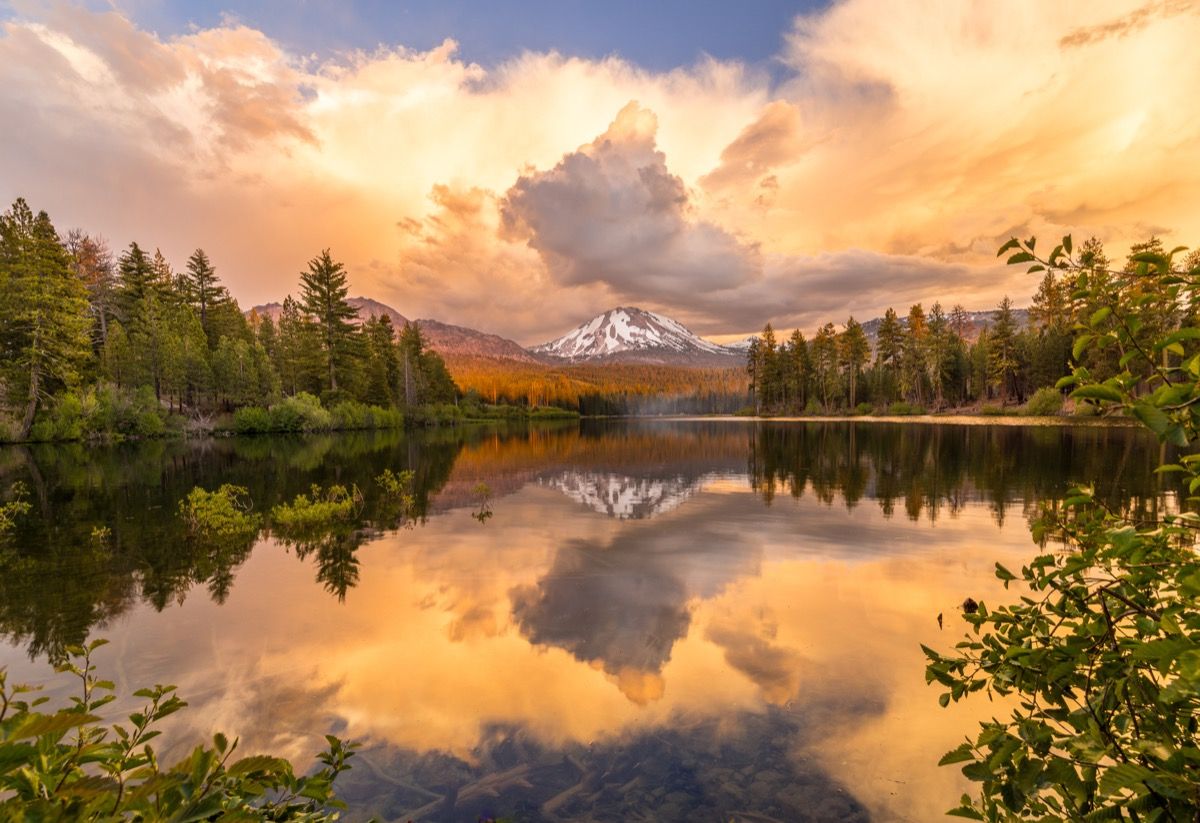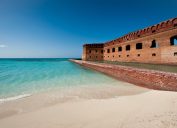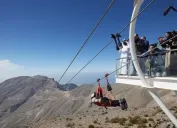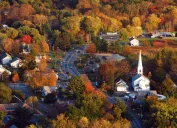6 National Parks to Visit While You Still Can
Beautiful aspects of these parks could disappear within this century

As far as destinations go, it's hard to beat national parks, home to some of the country's most beautiful and breathtaking scenery. But with over 400 to choose from, it can be challenging to decide where to start. If you're struggling to make up your mind, there are actually a few U.S. national parks that experts say should take higher priority, as they're threatened by the harmful effects of climate change.
From wildfires to droughts to flooding, scientists warn that the climate crisis could have serious ramifications when it comes to U.S. geography—and particularly our most treasured national parks. Charles van Rees, PhD, conservation scientist, naturalist, and founder of the Gulo in Nature blog, notes that climate change affects different ecosystems in different ways, but "aggressive climate action" is needed to combat the issue, and what humans are able to do is just a short-term solution for a long-term problem.
According to van Rees, the National Park Service (NPS), as well as the U.S. Fish and Wildlife Service, are focused on responding to climate change through different programs and initiatives, including firefighting efforts for areas impacted by wildfire, strategies to mitigate the spread of invasive species, and the aptly named Climate Change Response Program. The NPS also provides tips and tricks for visitors to reduce their carbon footprints, as part of a program entitled "Do Your Part!"
According to van Rees, "things are going to get worse before they get better" in terms of climate change, meaning you might want to plan your trip to certain parks sooner rather than later. Read on to find out which six parks are in the most danger of being altered by climate change, and why you should visit them while you can still experience all that they have to offer.
READ THIS NEXT: The 5 Newest National Parks You Need to Add to Your Bucket List.
1
Mount Rainier National Park
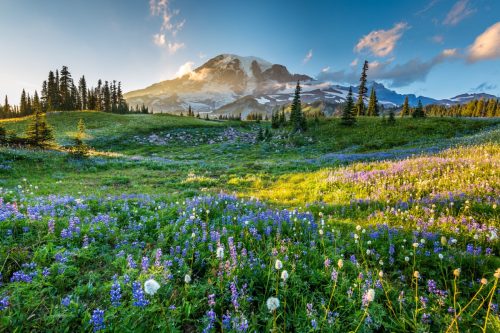
Mount Rainier National Park is a haven for hikers and explorers alike, situated in west-central Washington state. This park is famous for its sights, including glaciers, meadows, and lakes, but what you might not realize is that it's seriously threatened by climate change, namely its subalpine and alpine environments. And the park's namesake is particularly at risk.
"This infamous, white-capped dormant volcano is made up of approximately 25 major glaciers, however, the total volume of glacial ice has decreased by nearly 27 percent since the park's creation back in 1899," Carly Brown, owner and author of the travel blog Seek Out Serenity, LLC, tells Best Life. "Although some glacial melt is typical and crucial to uphold the park's flourishing ecosystem, today's historically high temperatures for the area can lead to more frequent natural disasters, such as avalanches, rockslides, and severe flooding."
All of these issues could make travel to the park potentially hazardous for visitors, Brown says. On a less urgent note, one of the park's more beautiful and alluring attractions, the spring wildflowers on Mount Rainier's subalpine meadows, may also be at risk, University of Washington News reported. The floral display draws over one million visitors to the park every year, but a recent study at the university found that warmer temperatures are melting snow in these meadows earlier and leading to a shorter wildflower season.
2
Joshua Tree National Park
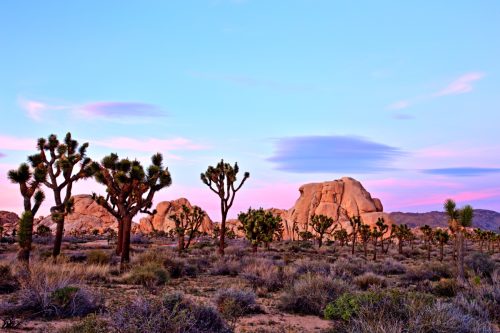
Another national park commonly recommended by experts to Best Life is Joshua Tree National Park in California. At this picturesque park, animal species—as well as physical Joshua trees—are threatened by changing temperatures.
"In desert areas like Joshua Tree National Park, where many plants and animals are specially adapted to live right on the extreme of what's possible for enduring heat and drought, climate change is pushing wildlife over the edge," van Rees explains. "Intensifying droughts could wipe out the beautiful and bizarre Joshua trees for which the park was originally named within the current century."
Many travelers seek out Joshua Tree specifically to see these unique trees, Sam Opp, full-time travel blogger at Find Love & Travel, points out, but wildfires remain a dire threat to the park as a whole. "The 2020 Dome Fire burned an estimated 1.3 million Joshua trees," Opp says. "By the year 2099, some researchers suggest that if climate change continues at this rate, 80 to 90 percent of suitable habitat can be lost."
For more travel advice delivered straight to your inbox, sign up for our daily newsletter.
3
Yellowstone National Park
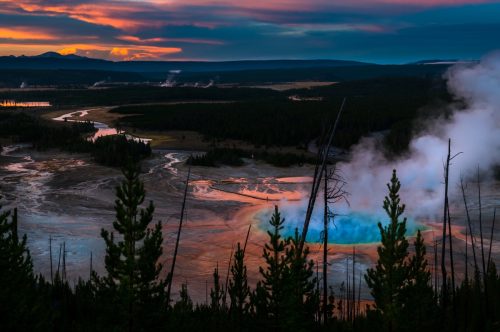
Yellowstone National Park has made headlines for climate events lately, most recently a massive flood caused by extreme temperatures on June 14. Water levels reached record highs, coming in a 11.5 feet, the Bozeman Daily Chronicle reported. Two to three inches of rain hit, followed by temperatures that melted 5.5 inches of snow. Over 10,000 park visitors were evacuated as a result of the flood, which permanently changed the park by wiping out bridges and roads, the Associated Press reported.
"If this year was any indication of the future of this national park, you may want to put [it] higher up on your bucket list," Opp says, noting that certain roads and entrances to the park remain closed.
Hotter temperatures at higher elevations not only threaten the landscape, but also Yellowstone's native species, van Rees points out.
This "is also allowing harmful invasive species to spread further up in elevation, killing off beautiful and important trees like whitebark and lodgepole pines," he explains.
4
Glacier National Park
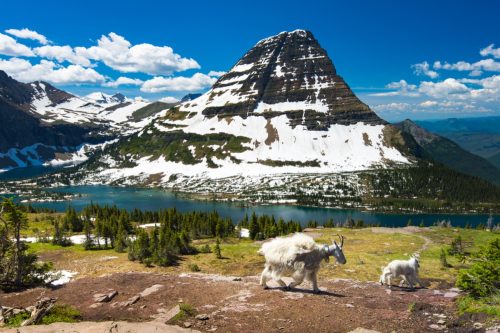
The threat to Glacier National Park in Montana may seem obvious, but that doesn't make the situation any less dire. According to van Rees, glaciers have been shrinking for decades as a result of warmer temperatures, and some already disappeared in the 1990s and early 2000s. Not only does this take away a stunning view, but the melting glaciers are troublesome for "downstream ecosystems," he explains, and the threat is palpable at Glacier National Park.
"Of the continental national parks, none have been more visibly impacted than Glacier National Park," Adam Marland, travel photographer and writer for We Dream of Travel, says. "What would eventually become Glacier National Park contained about 80 glaciers at its peak in the 1850s, but that number is now at 25 or less. What's worse, every glacier within the park has shrunk considerably in recent years, some as much as 80 percent."
Marland points out that wildfires have also historically been a threat to Glacier and other parks, but fires are now larger and causing "unprecedented damage." "What has long been heralded as one of the top five national parks in the country is vanishing rapidly," he says. "If there is one park to shuffle to the top of your bucket list, Glacier National Park is the one."
5
Everglades National Park
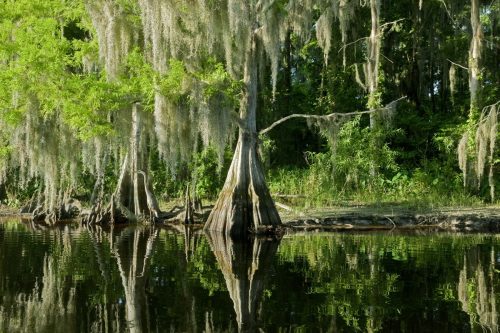
On the East Coast of the U.S., deep in southern Florida, is Everglades National Park. The name might conjure images of alligators and swamps, but this national park has some fascinating and unique species across 1.5 million acres, which are put at risk by rising sea levels.
Similar to Acadia National Park—which also faces impending climate-related woes—Everglades is "close enough to sea level" and "will soon be inundated, leading to permanent loss of important ecosystems and beautiful sites for visitation and recreation," van Rees tells Best Life.
"In the Everglades, most of the species there are adapted only to freshwater environments," he says. "Rising seas could actually push salt water up through the groundwater, which would make these species disappear."
The park is quite literally disappearing, researchers say (via CNN), and the wetlands are half of their original size. If you've been envisioning yourself on an air boat ride through the Everglades, plan your trip for the not-too-distant future.
READ THIS NEXT: The 8 Best U.S. National Parks for People Over 65, Experts Say.
6
Yosemite National Park
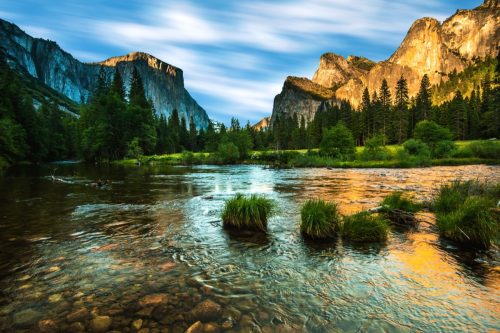
Rounding out the list is Yosemite National Park, where park officials and firefighters have been working to combat raging wildfires this summer. In June, the Washburn fire threatened the famed Mariposa Grove, home to several looming sequoia trees. And a second blaze, the Oak Fire, began on July 22 and has burned nearly 20,000 acres to date. Thankfully, the fire is now 79 percent contained, but fires persist as an issue every summer.
"Decreased rainfall and more water scarcity thanks to climate change are making fires more frequent and more severe in many parts of the world," van Rees says. "This is a huge problem for national parks in California like Yosemite and Sequoia, where ancient trees that are adapted for more moderate historical climates are now being burned out."
These fires aren't a new occurrence, and have been affecting Yosemite over the course of several summers. Park officials have been working to combat the issue through a removal and thinning project—while it seems counterintuitive, experts say they are cutting down trees to save trees.
Considering that wildfires pose such as threat, Brown actually recommends putting "the triad of California national parks" at the top of your travel list, including Sequoia, Yosemite, and Kings Canyon National Park.
